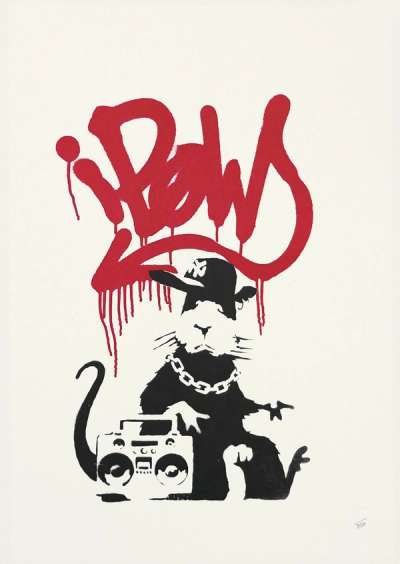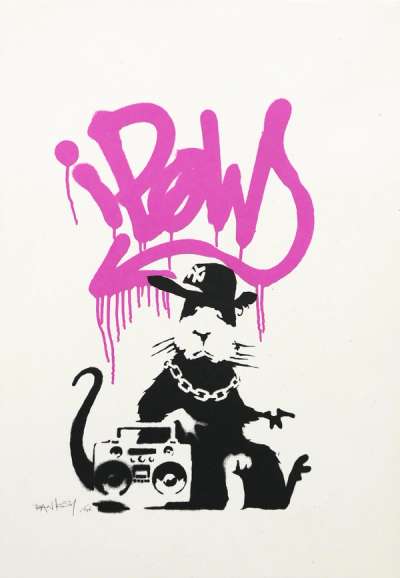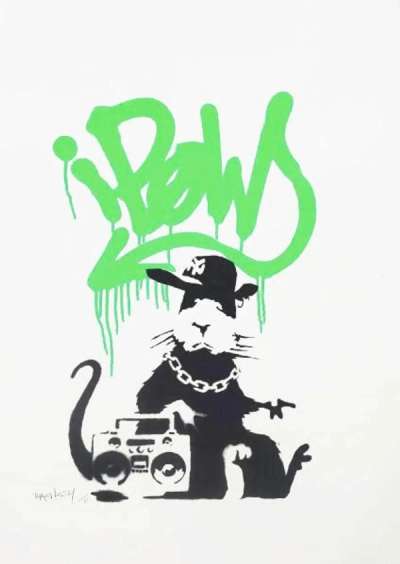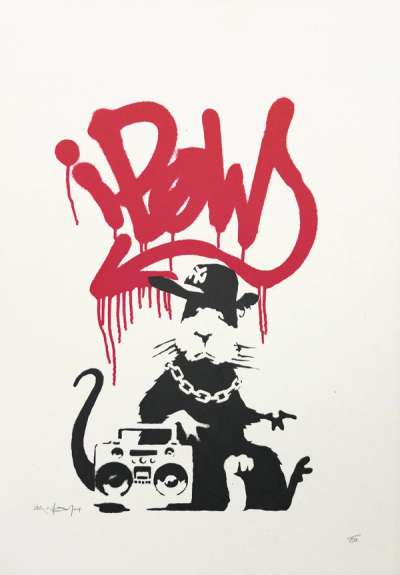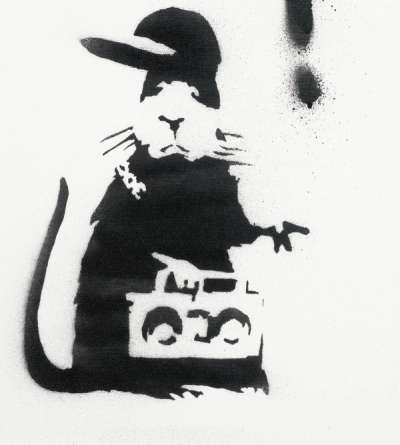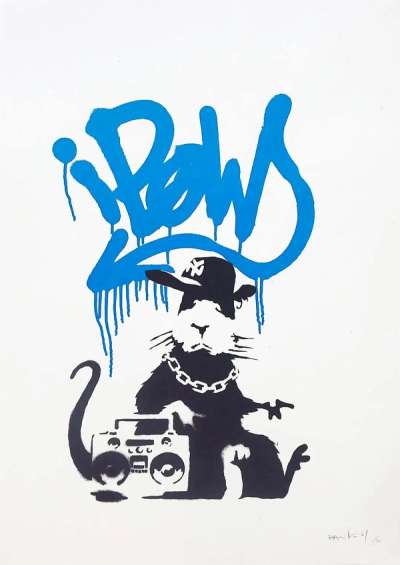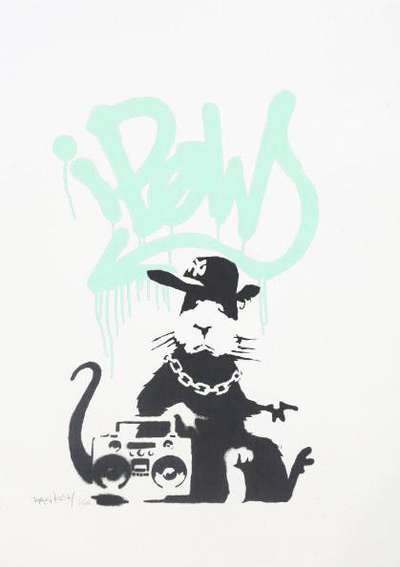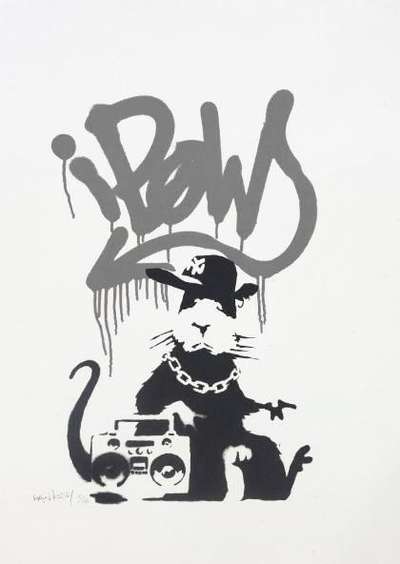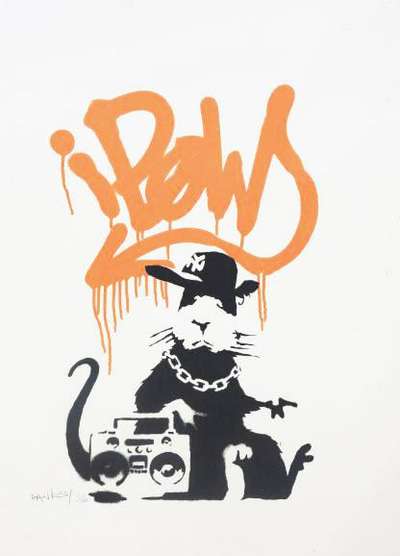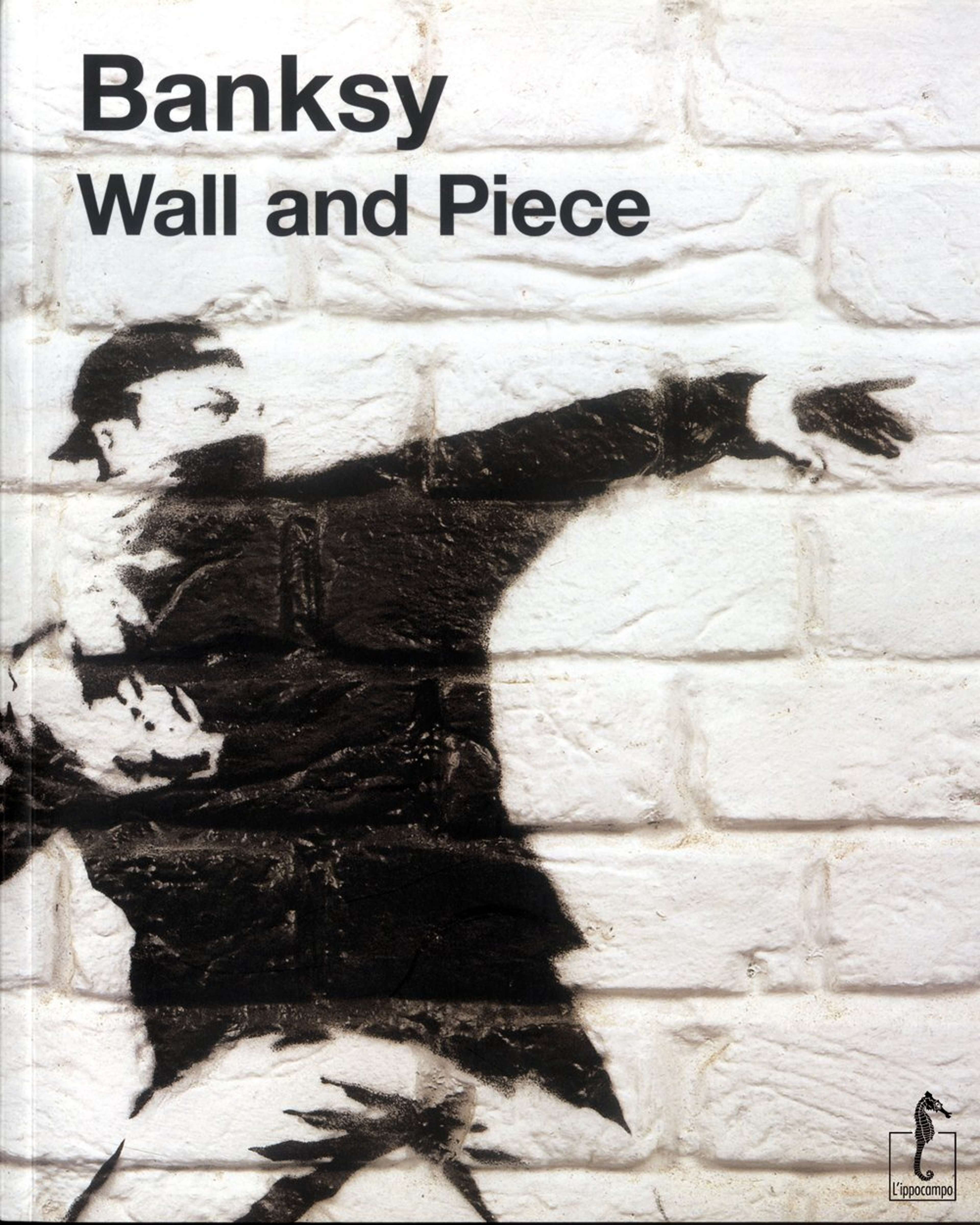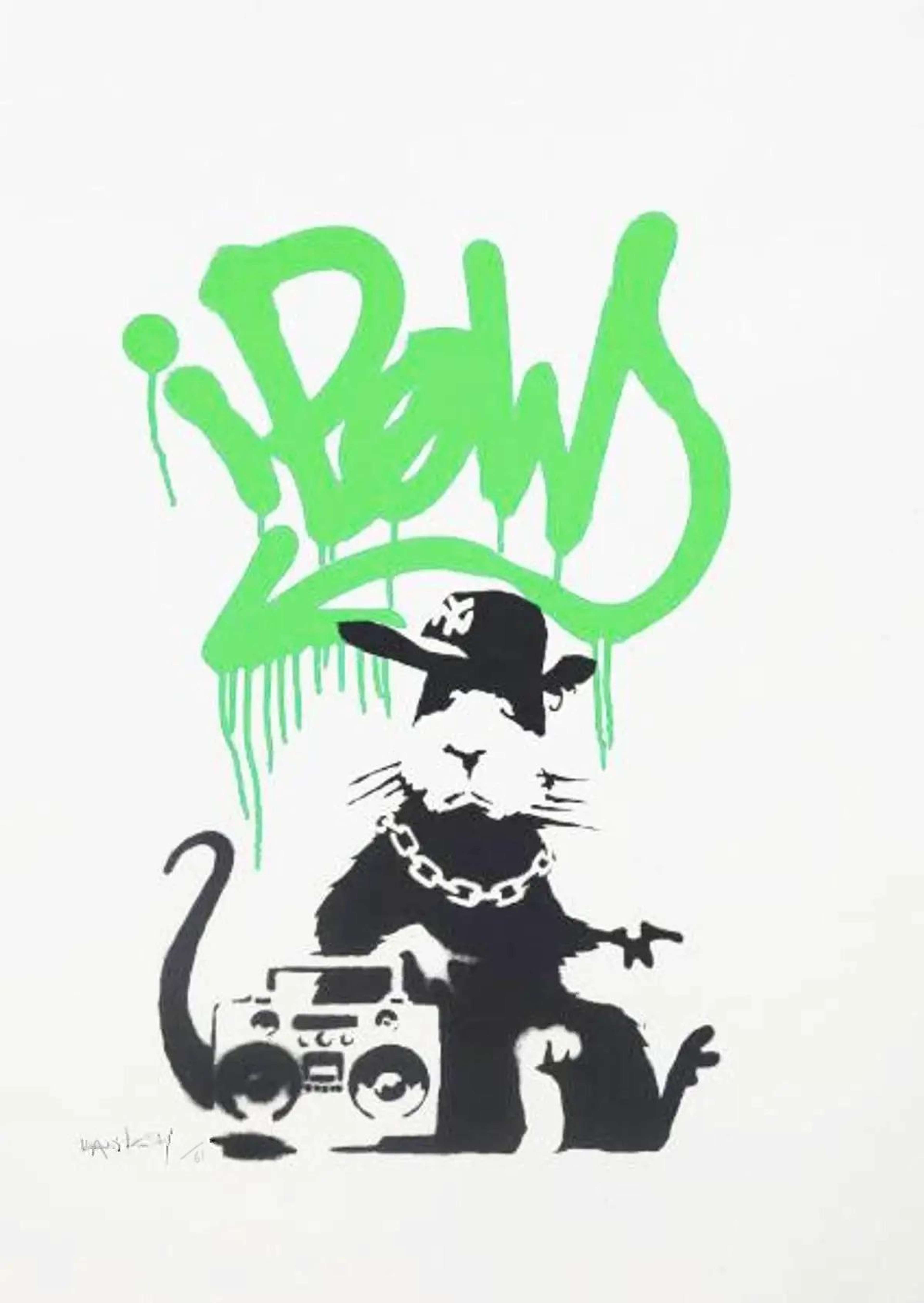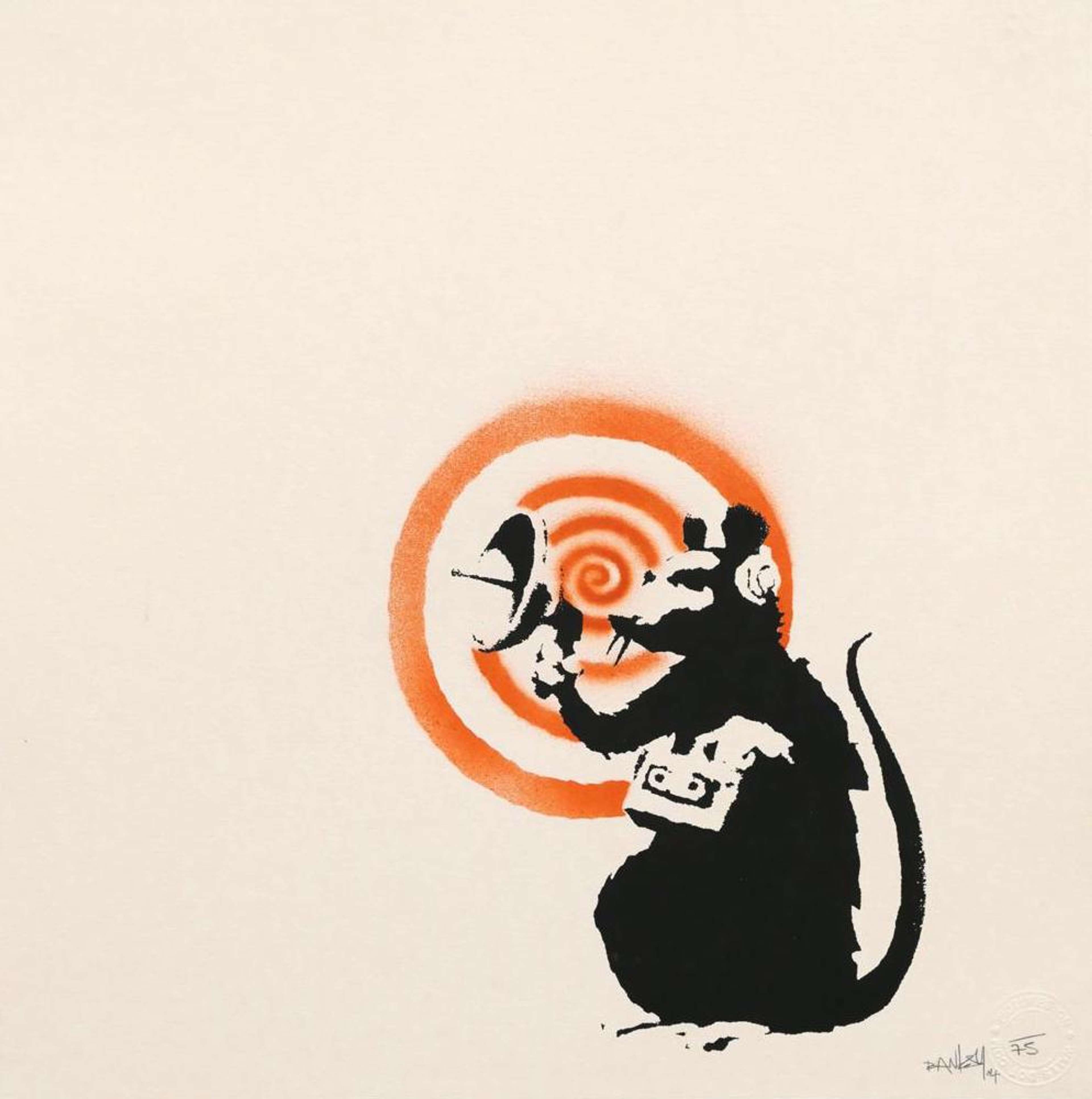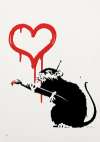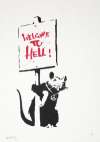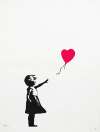Gangsta
Rat
Banksy's 2004 print Gangsta Rat combines spray-paint and stencilling techniques to depict a rat complete with baseball cap and necklace, and ghetto blaster, New York underground style. Having proved its popularity across many editions and colourways, the series reflects Banksy's skilful ability to draw on pop culture nostalgia.
Banksy Gangsta Rat For sale
Gangsta Rat Value (5 Years)
Works from the Gangsta Rat series by Banksy have a strong market value presence, with 65 auction appearances. Top performing works have achieved standout auction results, with peak hammer prices of £115000. Over the past 12 months, average values across the series have ranged from £9824 to £70000. The series shows an average annual growth rate of 13.91%.
Gangsta Rat Market value
Auction Results
| Artwork | Auction Date | Auction House | Return to Seller | Hammer Price | Buyer Paid |
|---|---|---|---|---|---|
 Gangsta Rat Banksy Unsigned Print | 13 Aug 2025 | Tate Ward Auctions | £7,650 | £9,000 | £12,500 |
 Gangsta Rat (AP pink) Banksy Signed Print | 1 Apr 2025 | Christie's London | £34,000 | £40,000 | £60,000 |
 Gangsta Rat (AP green) Banksy Signed Print | 17 Aug 2022 | Sotheby's Online | £76,500 | £90,000 | £110,000 |
 Gangsta Rat Banksy Signed Print | 20 Oct 2021 | Forum Auctions London | £51,000 | £60,000 | £80,000 |
 Gangsta Rat (AP mint green) Banksy Signed Print | 18 Sept 2018 | Sotheby's Online | £42,500 | £50,000 | £70,000 |
 Gangsta Rat Banksy Mixed Media | 29 Jun 2017 | Bonhams New Bond Street | £85,000 | £100,000 | £120,000 |
Sell Your Art
with Us
with Us
Join Our Network of Collectors. Buy, Sell and Track Demand
Meaning & Analysis
Banksy’s Gangsta Rat, first editioned in 2004, features one of his most frequently employed and easily recognisable motifs.
Combining spray-paint and monochrome stencilling techniques, this Bansky print depicts a black and white rat wearing a New York Mets baseball cap, a chain necklace, and carrying a ghetto blaster. The character portrayed is reminiscent of the New York underground style, popular in the UK in the 1980s and 90s. The rat appears to have tagged ‘iPow’ on the wall behind him in spray paint, an ironic commentary on the ubiquity of Apple products while POW is a reference to the artist's print publisher: Pictures on Walls.
Banksy initially released Gangsta Rat in the red colourway with 150 signed prints and 350 unsigned prints. In 2015, the artist re-released some rare colourways. These were limited to 46 pink, 8 mint green, 20 green, 61 orange, 61 blue and 61 grey for special VIP collectors for Dismaland in Weston-super-Mare.
The artist also reproduced Gangsta Rat as a mural in Farringdon in 2004, in Old Street in 2006 and in New York City in 2013 on the occasion of the artist’s painting residency: Better Out Than In.
Banksy's appreciation for rats is often attributed to French stencil artist Blek le Rat, also known as Xavier Prou, who is regarded as the ‘father of stencil graffiti’ and initiated urban art in France in the 1980s. Blek le Rat's spray-painted stencils of rats first appeared in Paris on the banks of the Seine, at the same time Banksy would have been drawing his own first sketches as a child.
Motivated by social consciousness, Blek le Rat chose to paint rats because they were ‘the only free animal in the city’. In Wall and Piece, Banksy said: “Every time I think I've painted something slightly original, I find out that Blek le Rat has done it as well, only 20 years earlier”.
To learn more about Banksy's rats, see our guide here.
